The unilateral lesion Parkinson’s disease (PD) model established through targeted damage of the substantia nigra and striatum by 6-OHDA is one of the most widely used animal models. After unilateral stereotaxic injection of 6-OHDA into the substantia nigra (SN), striatum (STR), or medial forebrain bundle (MFB), dopaminergic neurons are selectively damaged, resulting in asymmetric function of the two cerebral hemispheres and reduced DA content on the damaged side, causing lateralized damage. After subcutaneous injection of the dopamine receptor agonist apomorphine (APO), mice will rotate toward the healthy side.
Experimental Design and Standard Assays
1. Experimental Design

2. Confirmation of Neurological Dysfunction
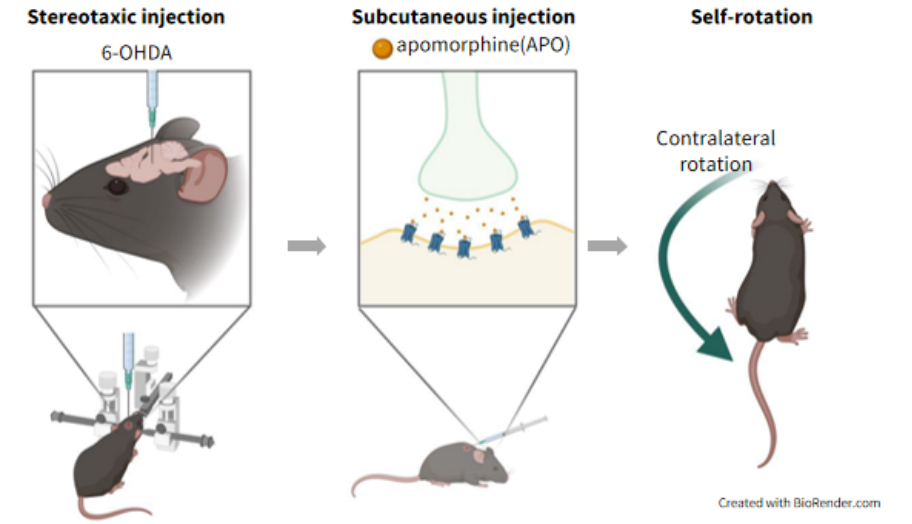
Four weeks after unilateral stereotaxic injection of 6-OHDA, subcutaneous injection of apomorphine (0.5 mg/kg) will cause mice to rotate toward the uninjured side. Mice that rotate more than 120 times within 30 minutes (4 turns/minute) can be selected for use on study.
3. Behavioral Test: Open Field

n=10 mice/group. Data are represented as mean ± SEM. T-test was performed to determine the statistical significance between 2 groups. *P<0.05,**P<0.01,***P<0.001,****P<0.0001. P<0.05 was considered statistically significant.
PD mice do not show decreased locomotor activity and anxiety-like behavior in the open field test.
4. Behavioral Test: Rotarod
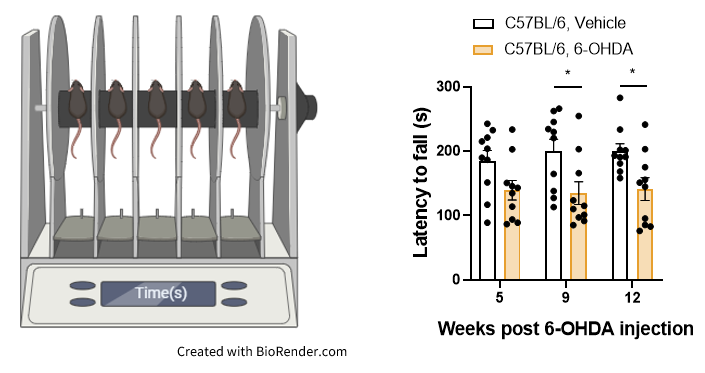
n=10 mice/group. Data are represented as mean ± SEM. T-test was performed to determine the statistical significance between 2 groups. *P<0.05,**P<0.01,***P<0.001,****P<0.0001. P<0.05 was considered statistically significant.
PD mice show deficits in motor learning and motor coordination in the rotarod test.
5. Behavioral Test: Pole Test
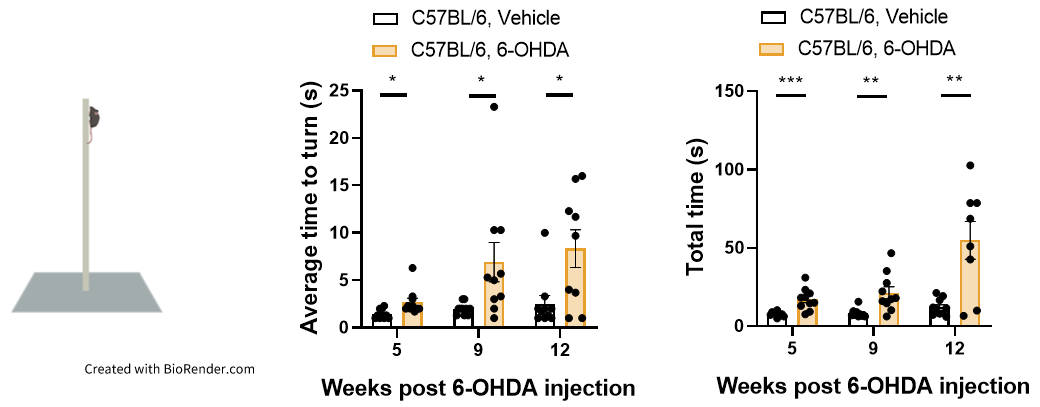
n=10 mice/group. Data are represented as mean ± SEM. T-test was performed to determine the statistical significance between 2 groups. *P<0.05,**P<0.01,***P<0.001,****P<0.0001. P<0.05 was considered statistically significant.
PD mice show bradykinesia and reduced motor coordination in the pole test.
6. Behavioral Test: Gait Analysis
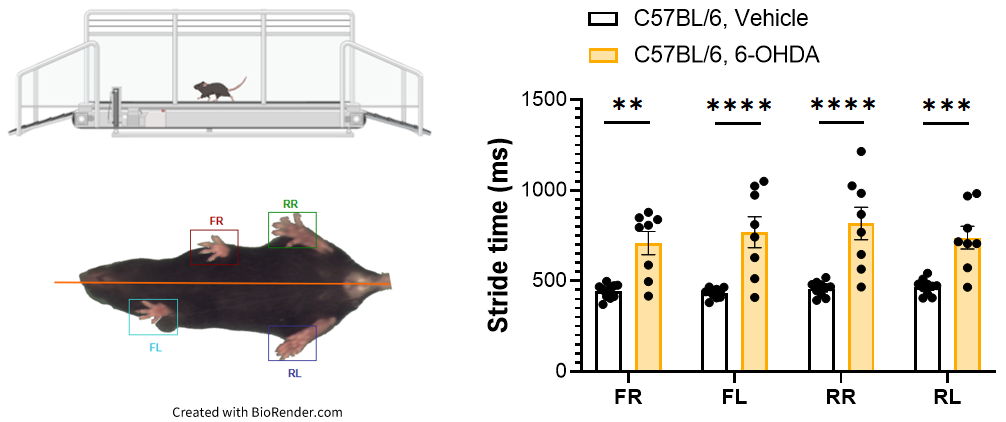
n=8-10 mice/group. Data are represented as mean ± SEM. T-test was performed to determine the statistical significance between 2 groups. *P<0.05,**P<0.01,***P<0.001,****P<0.0001. P<0.05 was considered statistically significant.
Four weeks after 6-OHDA injection, gait analysis demonstrates that PD mice exhibit significant bradykinesia.

n=8-10 mice/group. Data are represented as mean ± SEM. T-test was performed to determine the statistical significance between 2 groups. *P<0.05,**P<0.01,***P<0.001,****P<0.0001. P<0.05 was considered statistically significant.
Four weeks after 6-OHDA injection, the stride length of PD mice is decreased significantly, indicating that PD mice develop movement disorders typical of dopaminergic neuron dysfunction.

Nine weeks after 6-OHDA injection, PD mice exhibit impairments in gait.
7. Pathology: TH+ Neurons in the Substantia Nigra and Striatum
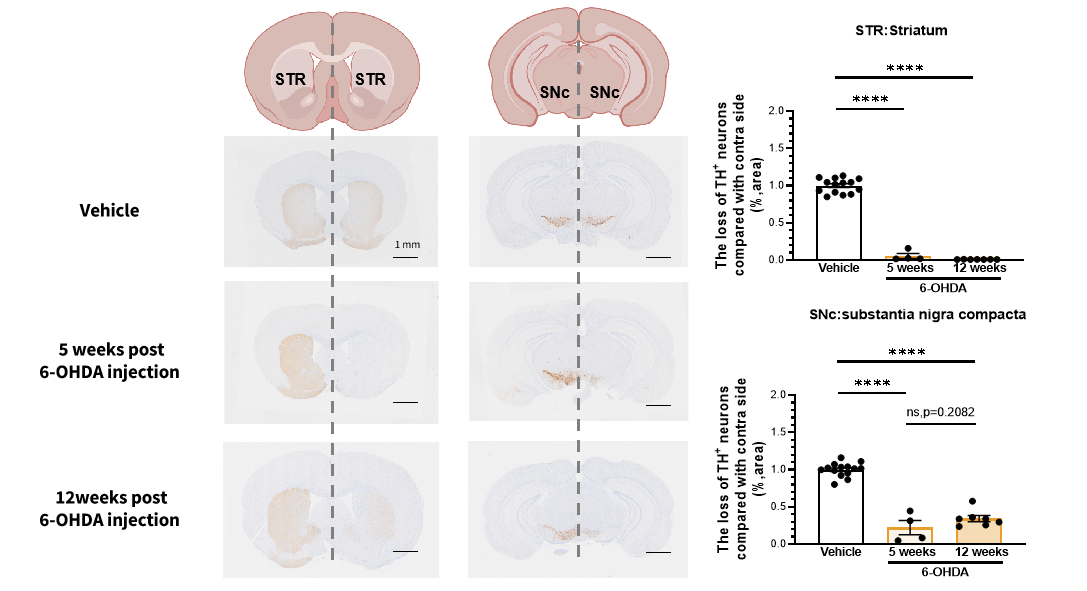
n=4-10 mice/group. Data are represented as mean ± SEM. T-test was performed to determine the statistical significance between 2 groups. *P<0.05,**P<0.01,***P<0.001,****P<0.0001. P<0.05 was considered statistically significant.
Five, nine, and twelve weeks after 6-OHDA injection, TH+ neuron loss can be observed in the striatum and substantia nigra on the injured side of PD mice.
8. Pathology: Number of IBA1+ Microglia in the Cortex and Striatum
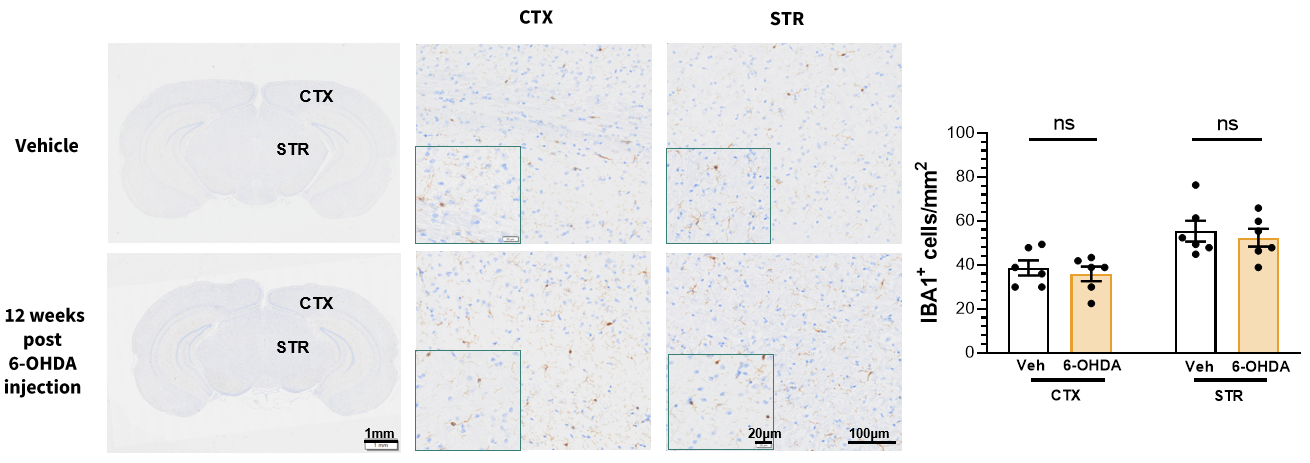
n=6 mice/group. Data are represented as mean ± SEM. T-test was performed to determine the statistical significance between 2 groups. *P<0.05,**P<0.01,***P<0.001,****P<0.0001. P<0.05 was considered statistically significant.
No significant increase number of IBA1+ microglia in the cortex and striatum of PD mice.
Note: Currently, the success rate for meeting PD model criteria with 6-OHDA-induction is approximately 70%.

